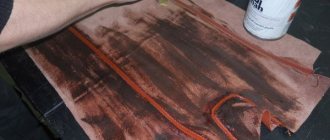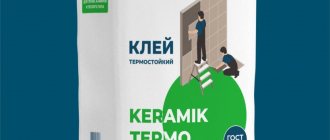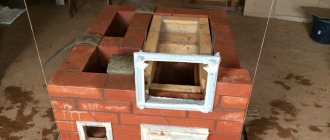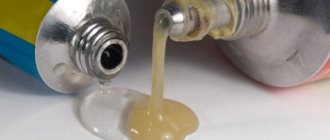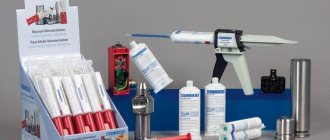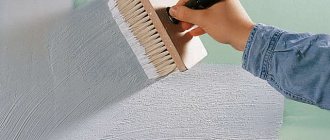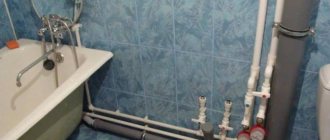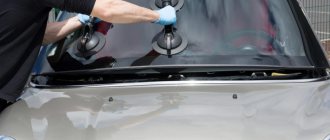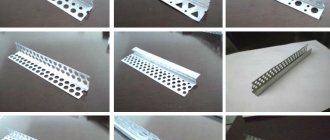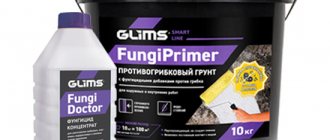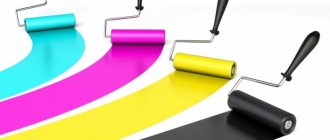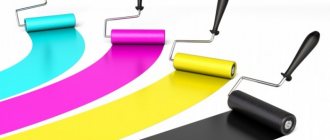Most buyers, when asked what PVA glue is, will answer that it is a product used for gluing paper. The correct answer to the question of what PVA glue is is the following. PVA adhesives are a line of adhesives with different characteristics and areas of application. In order to get the maximum effect from using the product, you need to choose it correctly and know how to dilute PVA glue in case of thickening.
What is PVA made from?
Buyers often ask the question of what PVA means in the name of the glue. The scope of application of the product directly depends on what the particular type of PVA glue is made of. The abbreviation PVA stands for polyvinyl acelate. Essentially, the adhesive is a polyvinyl acetate adhesive. The basis of PVA glue is polyvinyl alcohol vinalon, used for the manufacture of special synthetic fiber, of which 90% of the product consists. In addition to synthetic fibers, various additives are used to increase adhesion, stability and ductility.
Stationery PVA glue
The technical characteristics of PVA office glue are different. They must comply with GOST. This product is used for small household jobs and for gluing paper. Plasticizers are not included in PVA office glue, which makes the product harmless. An adhesive composition of this type in a small bottle, equipped with a brush, is bought for children.
What to replace it with?
Among the foreign compositions, we can note such as Pattex colle vinilica universal flex, Cleopatre Cleocol, Lydiakol.
On the territory of the Russian Federation, PVA can be replaced with a composition of a different type, which is intended for specific purposes. For example, in the case of wallpaper, they are looking for an option that is designed specifically for such compositions.
In the case of simple and easy one-time jobs, homemade paste is often sufficient. Its base is water or starch. Guaranteed cost reduction.
Universal
The technical characteristics of universal PVA glue make it possible to use the product when performing work for various purposes. It provides reliable grip on slippery surfaces. The composition of universal PVA glue includes various additives, including plasticizers, which ensures reliable adhesion when gluing leather, glass, wood and paper, wall and floor coverings.
Choosing a strong adhesive depending on the gluing material
Yacht wood glue
Yacht adhesive-sealant - Sikaflex290i DC is used in the process of sealing seams between wooden deck slats in the production of yachts and different types of vessels.
Adhesives for construction work: tiles, drywall, etc.
According to their intended purpose, adhesives for repair work can be as follows:
- parquet,
- tiled,
- wallpaper,
- carpentry,
- universal in use,
- special
To guarantee a positive result, it is important to pre-treat the surface. Do not forget to pay attention to the following point: diluting the dry mixture in the correct proportions, accurately diluting the two-component glue. Also, for reliable fixation in an apartment renovation, it is impossible to do without special Siroflex liquid nails.
Liquid nails Siroflex
Liquid nail glue is made from synthetic and high-quality rubber. Special polymers are added to it. The composition contains a filler that makes the glue flexible and durable.
It is used for gluing different surfaces; it is especially often purchased for performing any repair work in an apartment or house. In this case, he becomes a real and irreplaceable assistant. Used to join products made of glass, wood, ceramics and aluminum.
Siroflex must always be applied to a clean, pre-prepared surface.
Montagekit extreme grip for construction work
A special adhesive called Montagekit extreme grip is created and developed to perform any installation work. It has high initial adhesive strength. Easy to use. Suitable for both external and internal work, as well as for installation of window sills, tiles, thresholds, steps. Pros of the purchase: elasticity, strength, heat resistance.
How can you glue rubber and PVC together?
For gluing rubber and PVC, it is better not to use universal, inexpensive options for products. An important parameter of the product is the heat resistance of the composition. For example, RK-2 glue is excellent in all respects for attaching huge amounts of rubber.
Advantages: water resistance, forms a high-quality and durable seam. The use of rubber glue and polyurethane-based glue leads to positive results in carrying out repair work of any complexity.
Wallpaper glue
For quick and easy, high-quality gluing of purchased wallpaper directly onto a painted surface, it is best to use glue based on methylcellulose with a sufficient PVA content. Moment Non-woven fabric is an inexpensive composition that provides excellent and high-quality adhesion to the wall for smooth wallpaper. It can be completely safely stored in diluted form for several days.
Glass glue
All glass materials have one significant drawback - they are all fragile in use. Chips and some cracks are simply inevitable in many situations. But only the right glass glue will extend the life of your favorite expensive items.
The glue must have the following characteristics and features:
- quick and easy fixation,
- resistance to the negative effects of excess moisture,
- transparency (so that the seam obtained during gluing is invisible).
Moment Crystal is the best adhesive for gluing glass and metal. Super Moment Glass is the product you should choose for performing complex gluing when working with glass.
Textile adhesive
It often happens that a person urgently needs to glue together several selected pieces of fabric. For example, this is necessary for making any craft. This task can be easily accomplished thanks to polyurethone, neoprene, rubber adhesive composition.
A correctly selected mixture not only guarantees the strength of the connection, but also avoids traces from the chosen product. Universal textile composition - liquid thread. It works great with different fabric options.
bison glue
Bison adhesive, universal in use, is durable, developed on the basis of synthetic resins and special solvents. The scope of use of the product is quite extensive. For example, it reliably and quickly glues plastic panels, furniture fittings, and steps.
If you urgently need to cope with a small but important shoe repair, then the selected adhesive option is perfect for this situation. Suitable for materials under tension.
Before use, be sure to carefully read the instructions provided. For example, it is worth remembering that the product will only need to be applied at a temperature of no more than +25 degrees.
Glue for eyelashes eye cream
To create real beauty, women often use special false eyelashes. In order to secure them efficiently and safely for human health, you will need a proven and original glue called eye cream. It is easily removed from the eyelids, without injuring or tightening sensitive skin.
Medical glue bf 6
In medicine, glue is also actively used, only a special one, with a special composition, additional properties and characteristics. It is a clear liquid and has a wound-healing and antiseptic effect. It is used for necessary and urgent treatment of microtraumas, various scratches, cuts, abrasions.
Building
PVA construction adhesive, the composition and properties of which depend on the amount of additives, demonstrates high efficiency at high humidity. The products are used for indoor and outdoor work. High-quality PVA construction adhesive, which can be used at low temperatures, is added to masonry mortars for laying aerated concrete slabs and bricks. The answer to the question of how long it takes PVA construction adhesive to dry depends on many factors, including layer density and ambient temperature.
Comparison of the presented models
To make it easier to choose the ideal glue, we have compiled a comparison table:
| Model | Setting time, min | Freezing time, h | Temperature, °C | Quantity, ml |
| MOMENT JOINER PVA UNIVERSAL | 30 | 24 | +5…+30 | 250-750 |
| KRASS PVA PVA D3 | 60 | 24 | +5…+30 | 500-1000 |
| KLEIBERIT 303.0 | 30 | 24 | -30…+100 | 500-1000 |
| SOUDAL 66A | 30 | 24 | -30…+100 | 250-500 |
| KLEIBERIT 501.0 | 30 | 24 | -30…+100 | 500-1000 |
| EDP EPOXY GLUE | 180 | 24-48 | -50…+35 | 100-1000 |
| UHU PLUS ENDFEST 300 | 90 | 24 | -30…+75 | 30 |
Decoding
PVA glue contains 95% polyvinyl acetate. In addition to the main ingredient, the product may contain in different percentages:
- dioctyl sebacenate (DOS);
- dibutyl phthalate;
- various types of plasticizers;
- esters;
- preservatives;
- glycerin or oils;
- acetone;
- tricresyl phosphate;
- additives that stabilize the composition;
- water.
Depending on the main purpose of the adhesive, the composition of the adhesive may also include the following ingredients:
- styrene;
- defoamers that increase adhesion;
- nitro compounds;
- glass and metal chips;
- cellulose.
Product requirements:
- homogeneity of the mixture;
- high strength and elasticity of seams;
- resistance to temperature changes;
- inertness when exposed to air;
- non-toxic;
- harmless to humans.
Strengths
Good quality PVA glue is convenient to use, easy to apply, without smudges or stains. On average, the drying time of PVA glue ranges from 12 to 24.
Among the advantages of PVA glue it should be noted:
- plasticity and elasticity of the finished seam (joint);
- the absence of strong odors and toxic fumes, which makes the use of glue possible indoors;
- environmental friendliness;
- UV resistance;
- ability to completely fill cracks and crevices;
- no shrinkage when drying;
- fire and explosion safety;
- resistance to mechanical stress;
- the ability to maintain the shape of products made with glue;
- various types of packaging by volume.
The disadvantages of PVA glue are:
- instability of some types of glue to moisture;
- short shelf life (6-12 months).
Comparison table of technical characteristics
In this TOP we have collected the most popular PVA adhesives among users.
| Model | Applicator type | Form | Additional Information |
| Luch Glue PVA-M 85 g | dispenser | liquid | does not leave white marks when drying |
| BRAUBERG Universal PVA glue 600982 | dispenser | liquid | frost-resistant |
| CENTRUM White PVA stationery glue 80 ml 80838 | dispenser | liquid | frost-resistant; washes off with water |
| InFormat PVA glue 120 g | dispenser | liquid | quick-drying |
| Yunlandia PVA Glue 125 g | dispenser | liquid | frost-resistant |
| Elmer's PVA School Glue white 946 ml | without dispenser | liquid | non-toxic |
| OfficeSpace PVA glue 1 kg | without dispenser | liquid | universal |
Below is a detailed description of each model.
Rules for working with PVA glue
The rules for working with PVA glue are simple. They depend on the type of adhesive. The main requirements when working with PVA glue are:
- on dense materials it is necessary to apply two layers;
- for spot application, use a pipette or syringe;
- do not allow the substance to come into contact with mucous membranes (in case of contact, rinse with water);
- in an open container, the glue is stored for up to six months;
- After working with glue, wash your hands.
You should use fresh glue; when it dries, the substance can be diluted. Information on how to dilute PVA glue is indicated in the instructions.
Application, how long it takes to dry
Working with PVA is quite simple. The instructions will tell you what glues this or that type of product and how to use it. The use of wallpaper adhesive or D3 on wood surfaces may vary slightly. Problems often occur when working with paper surfaces. You need to remember a simple rule: the substance is applied to the surface that absorbs it more slowly, that is, less porous.
Advice
If the product is applied to thin wallpaper, then one layer is enough. For dense materials you will need two.
When glue needs to be applied pointwise, use a special nozzle. If it is not there, then a syringe without a needle or an ordinary pipette will do. They will come in handy more than once; only after use you need to wash them thoroughly with water. If the application surface is large, then you need to take a roller, brush or sponge. The substance should be applied starting from the center and gradually moving to the edges. You need to act quickly, since the drying speed on paper is faster than on wood and other surfaces.
To get rid of air bubbles, you can apply a sheet of paper to the surface and smooth out the unevenness through it with a roller or just your hand. When possible, it is recommended to keep glued items under pressure for reliability. It is worth noting that when gluing paper it is better to use the so-called “archival” PVA glue. It is acid-free, so the paper will not turn yellow after a few years.
PVA glue usually dries naturally within a day. But sometimes the question arises of how to quickly dry a product made with its help. In such cases, heat must be used. For example, put the item near the battery or blow on it with a hairdryer. You can even put it in the microwave, but only if there are no metal parts.
We recommend: Types of glue for foam rubber and rules for its use
When and why to dilute with water
Thickened adhesive can be diluted, but in order not to spoil the product, you need to know how to dilute PVA glue. Various liquids are used to dilute PVA adhesives:
- Stationery or household glue can be diluted with water, but the water resistance is partially lost;
- Universal glue and “SuperM” are diluted with an organic solvent.
Customers often ask the question of how to dilute PVA glue to prepare a primer. To prepare a primer applied to surfaces in order to increase adhesion, slightly heated water is used, which is gradually introduced into the primer.
Ph-indicator
This value shows the level of acidity of the glue and suggests the possibility of staining the glue joint. If the glue is acidic, pH below 4-5, then after curing of the glue joint, coloring may occur: - gray, which indicates the presence of iron compounds in the wood, - red, purple colors indicate the presence of tannin, - green, if the wood has been pre-treated with a bleaching solution that contained chlorine. Discoloring the adhesive seam in the finished product is extremely problematic due to additional costs and the use of strong chemicals. Coloring of the adhesive seam can occur both when mixing the adhesive components - due to the contact of iron parts with the composition, and during pressing due to contact of the released adhesive with the press parts. To avoid this, you should choose adhesives with an acidity value closer to neutral 5-7, and these are usually PVA adhesives with fillers.
